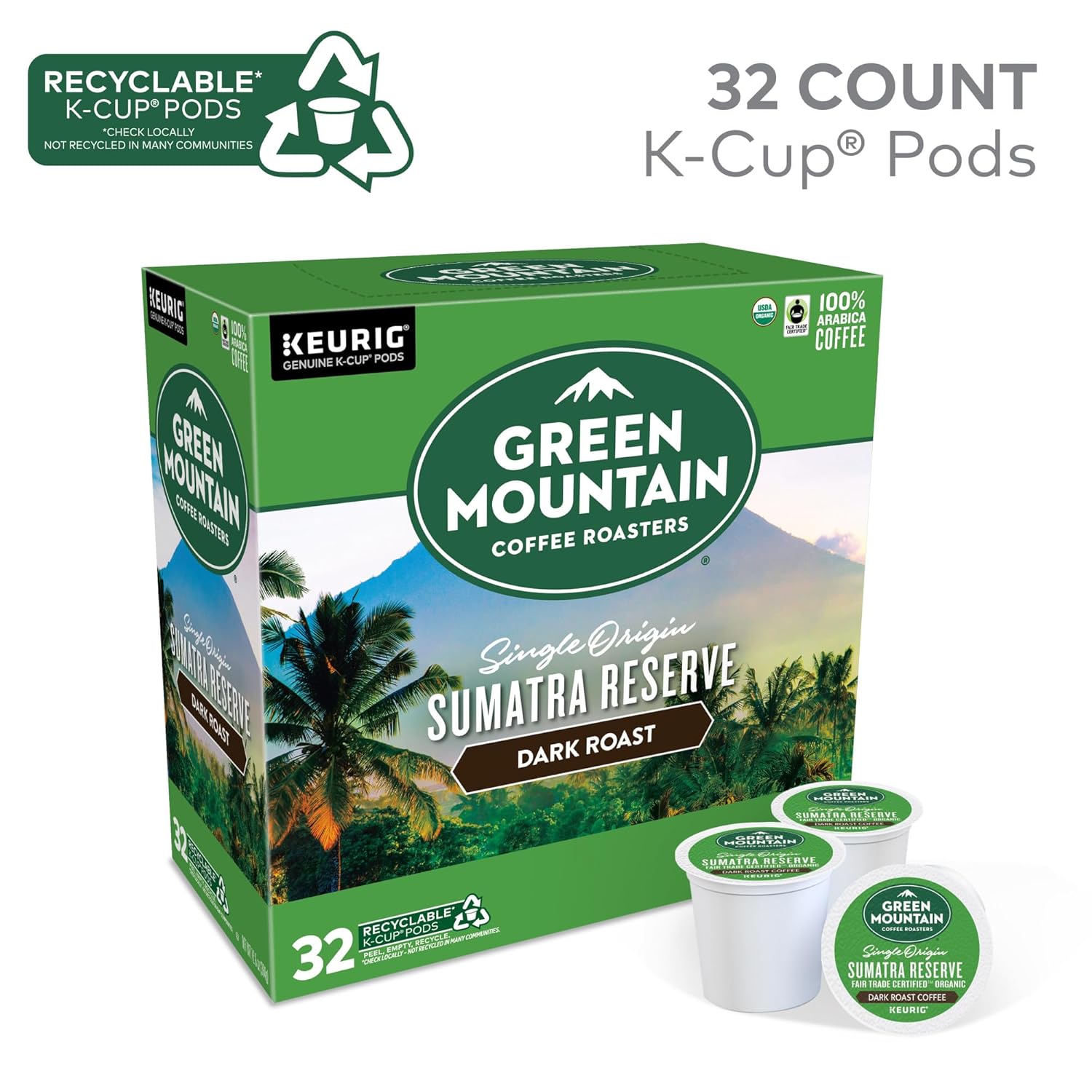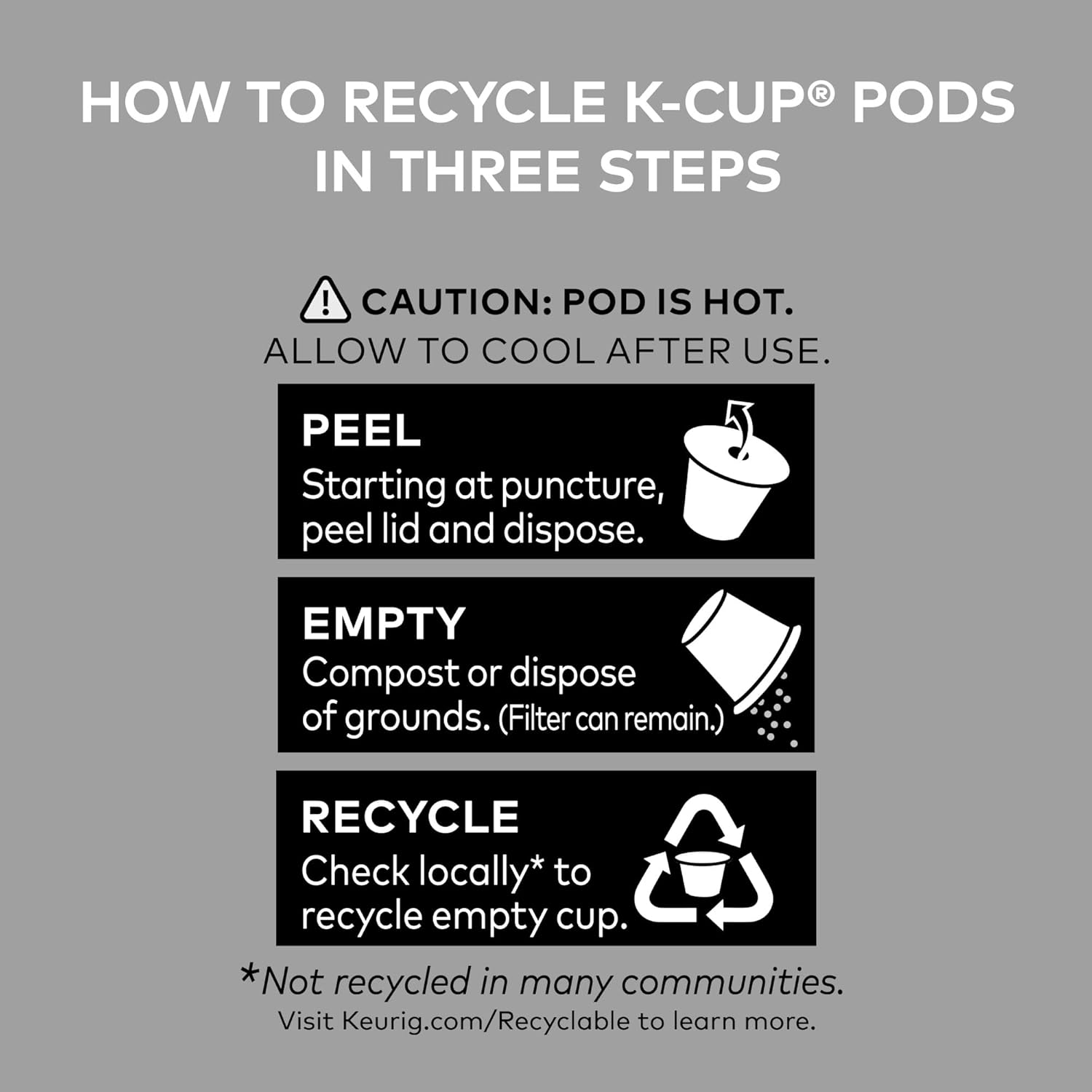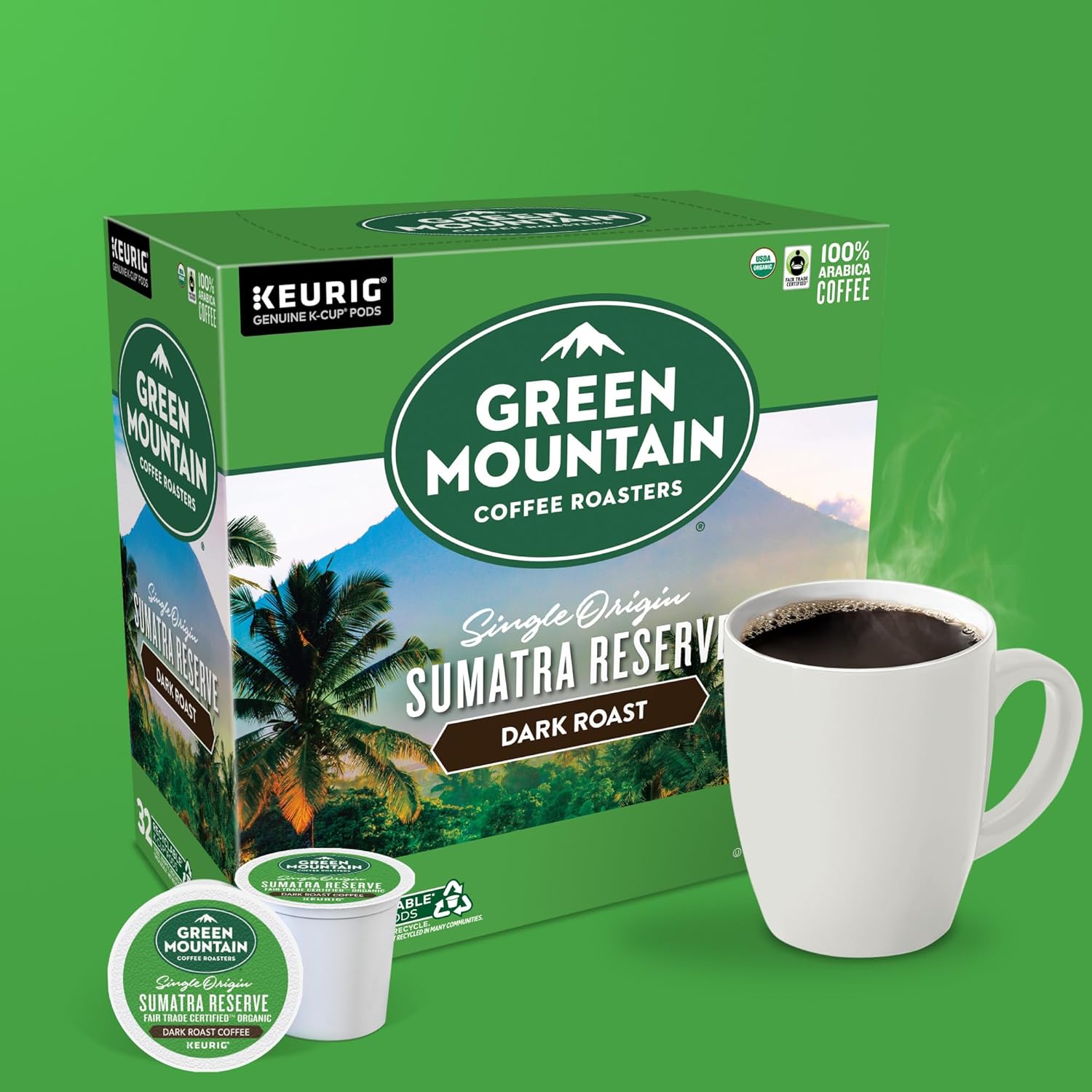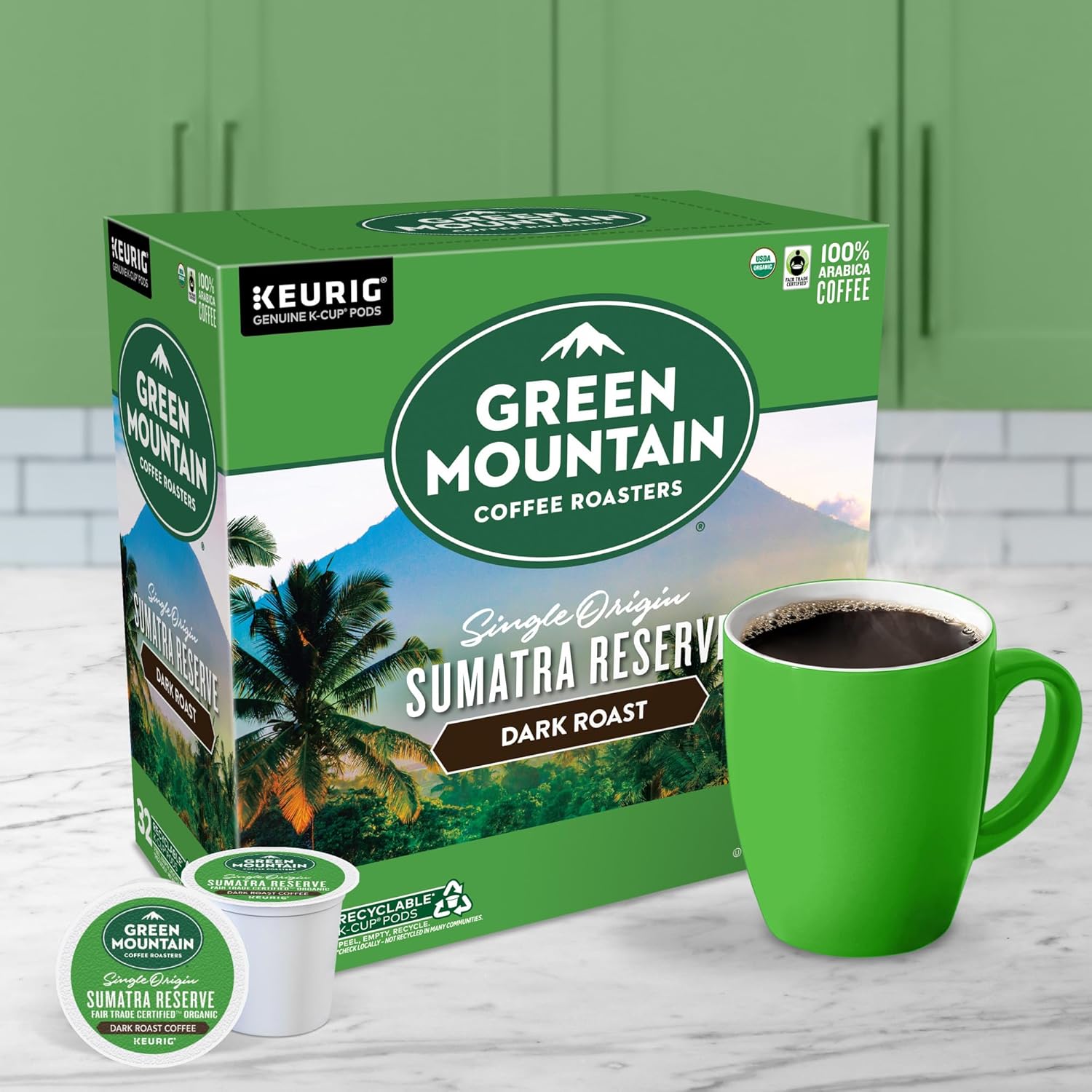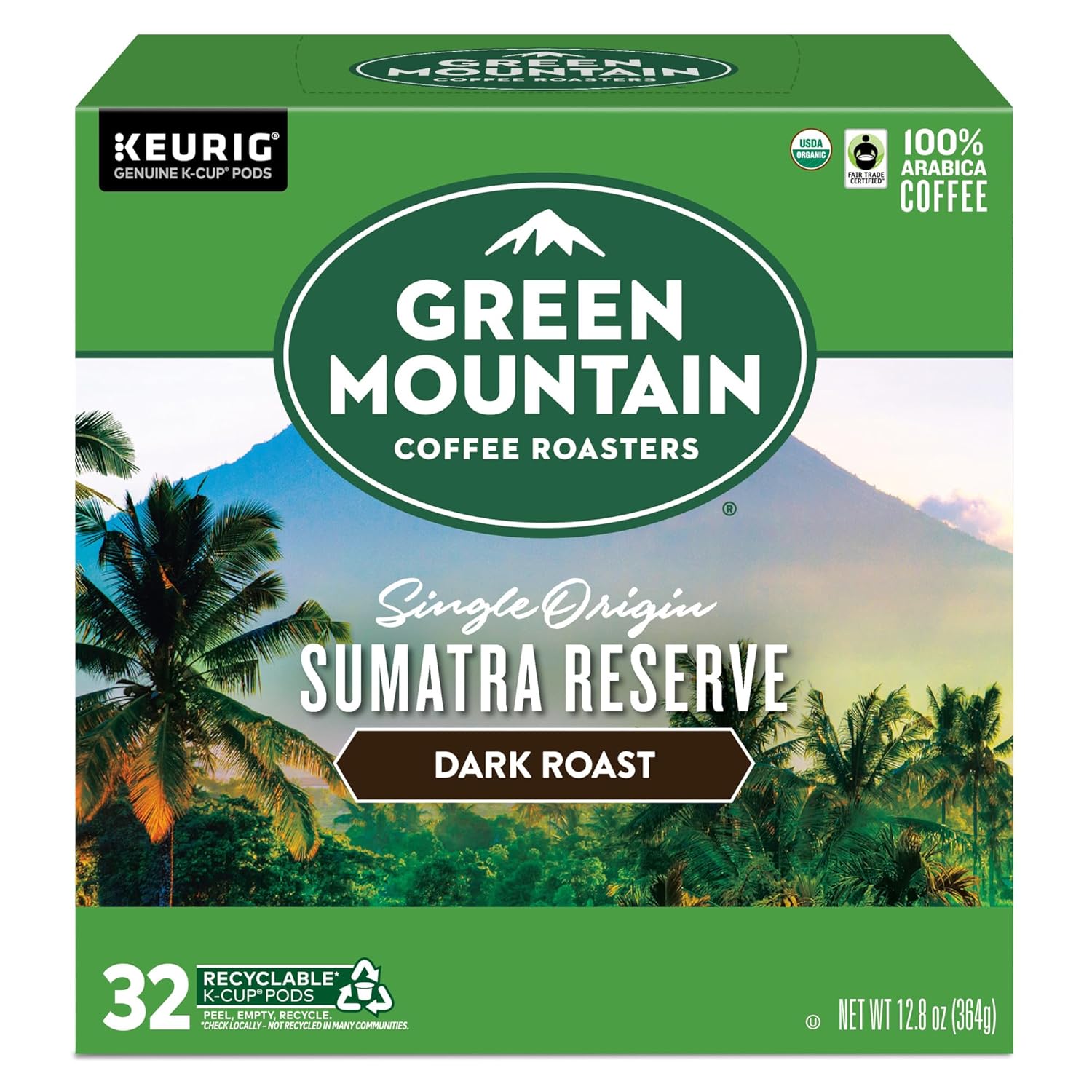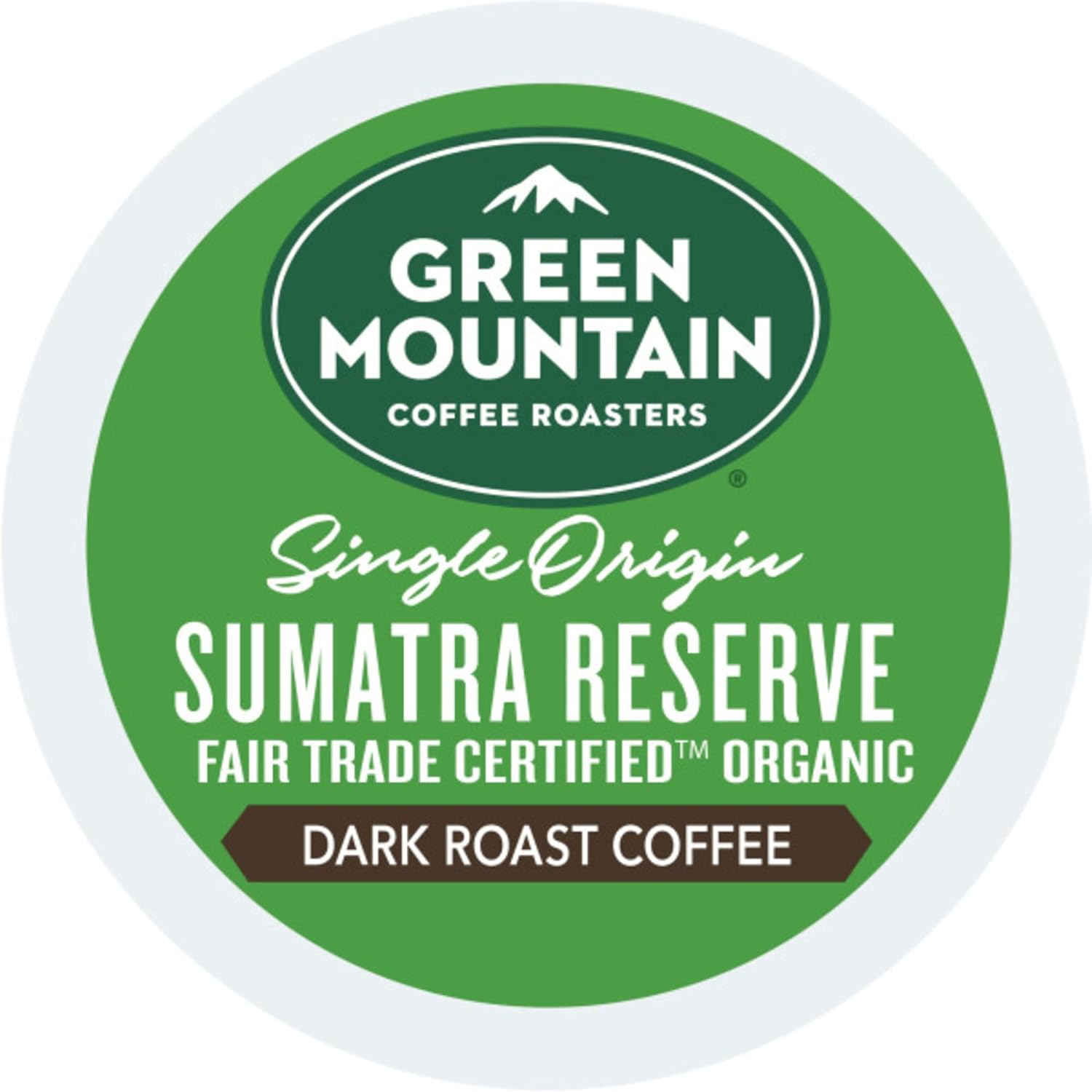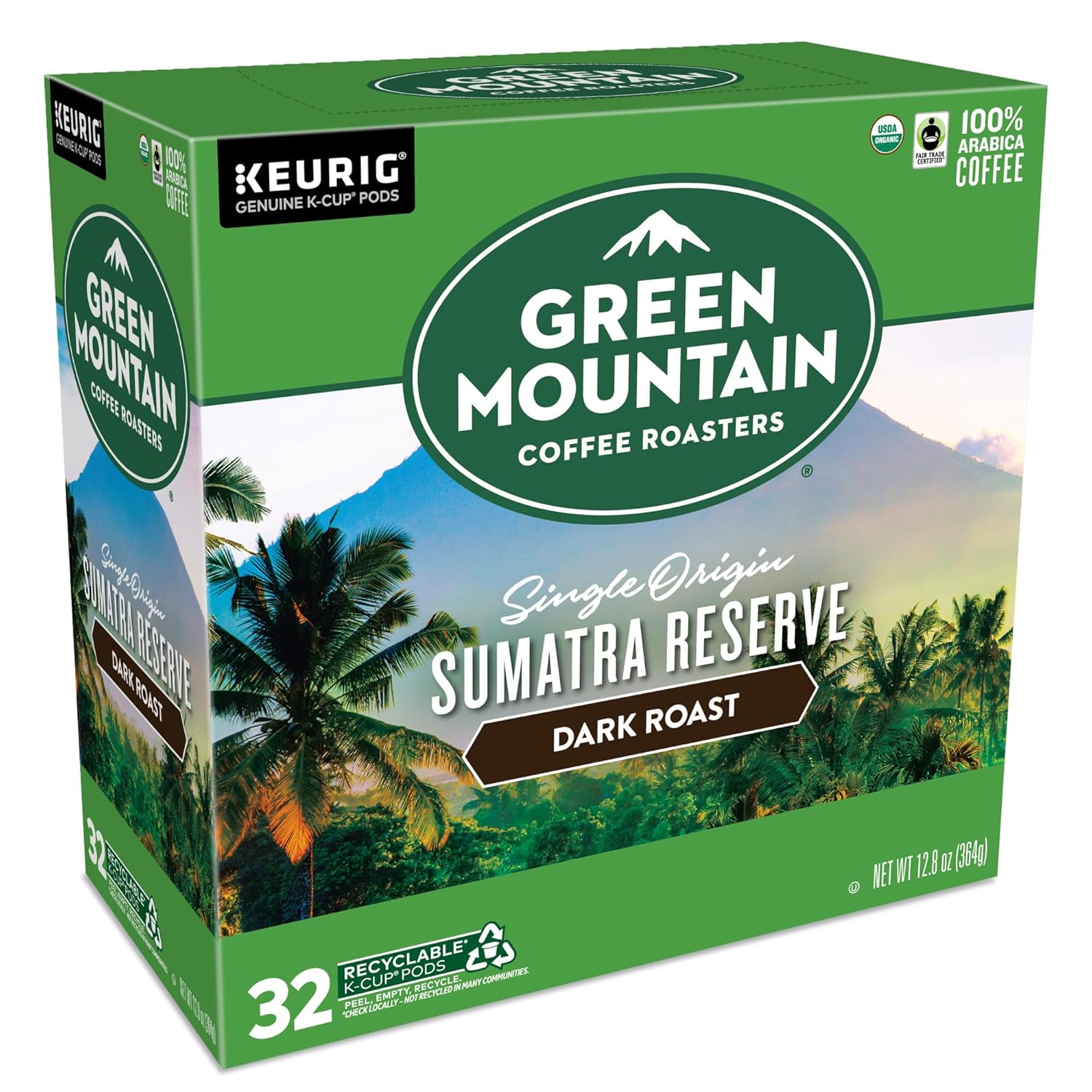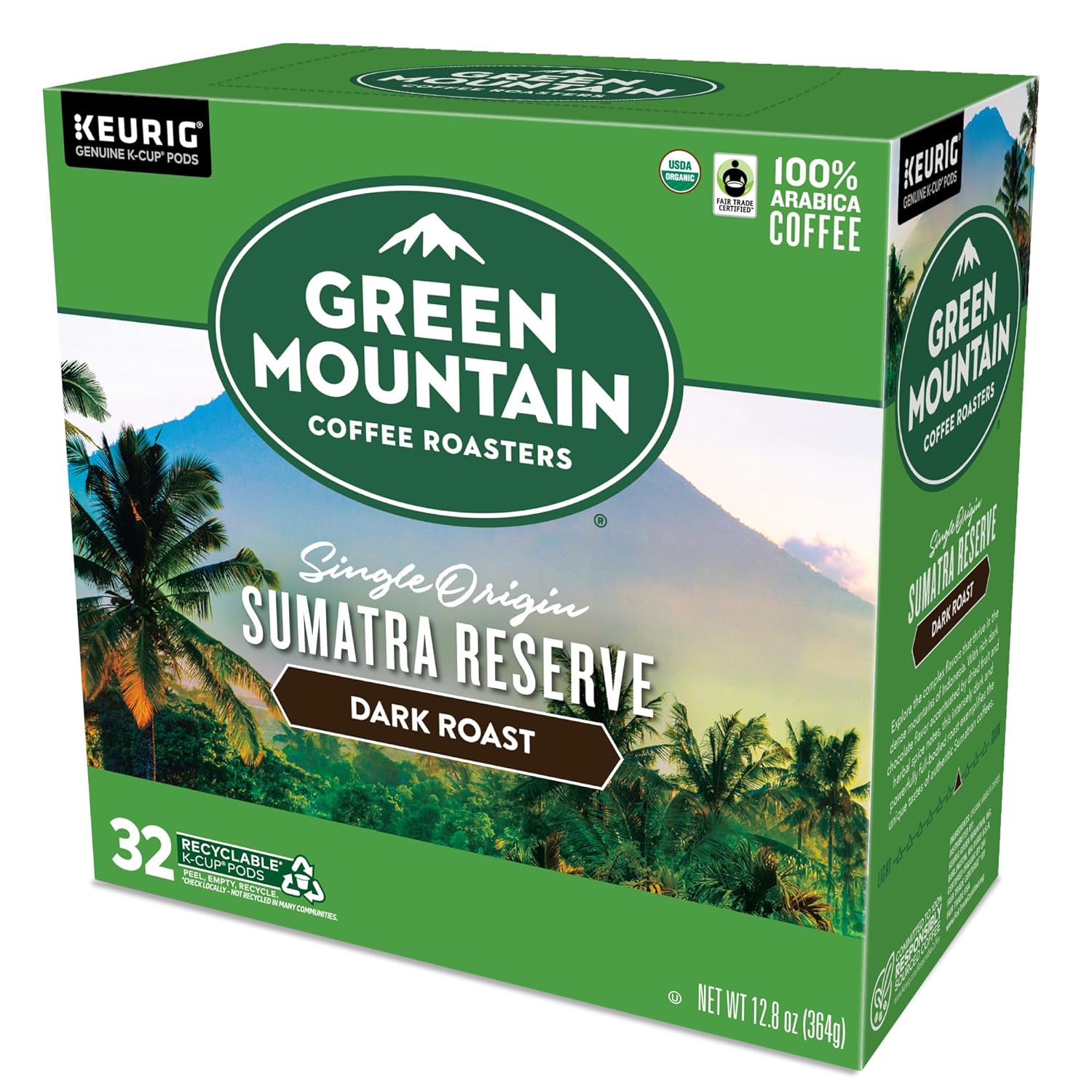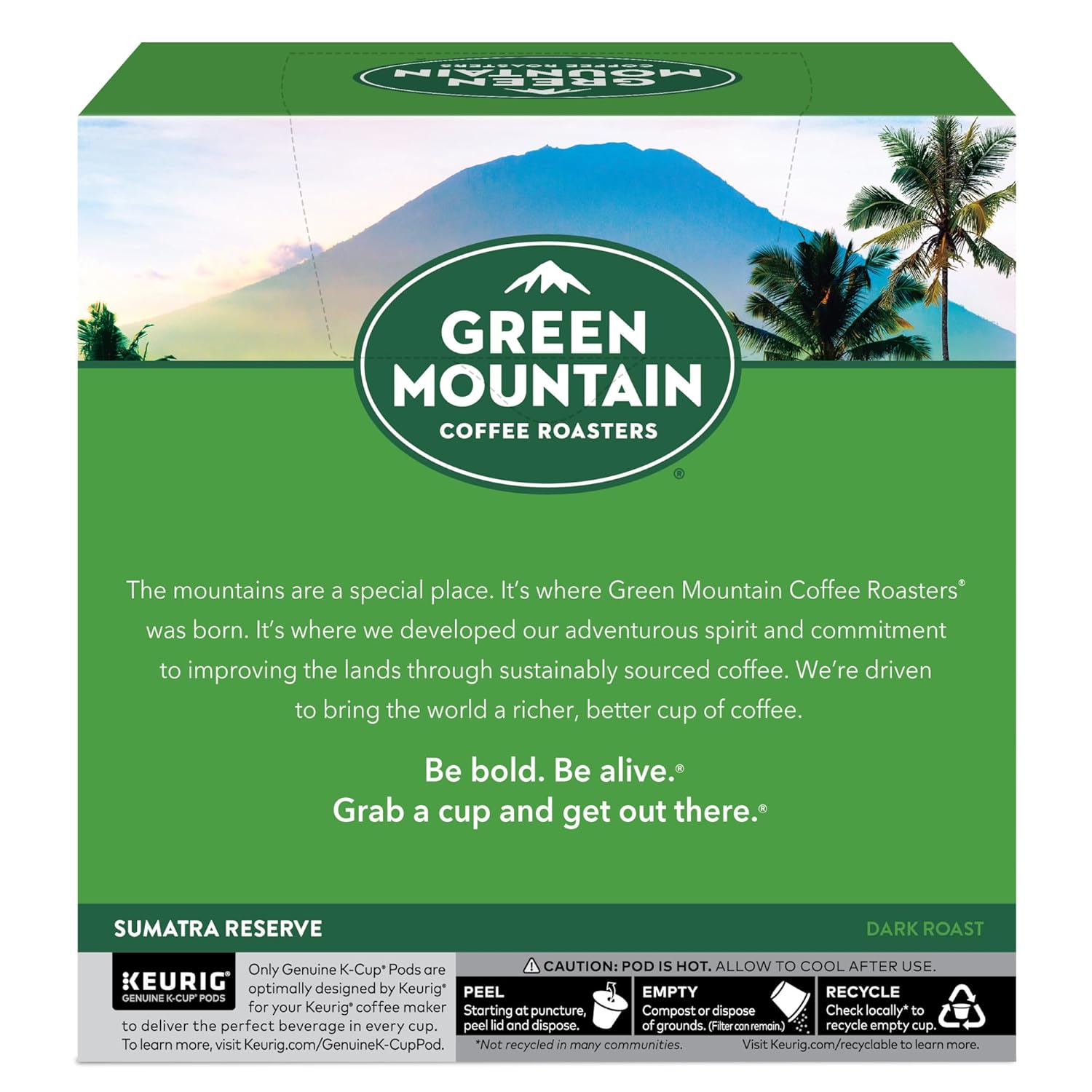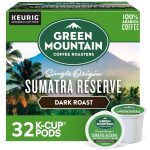
Green Mountain Coffee Roasters Sumatra Review starbucks sumatra k cups Buying Guide – Oemiu
Unveiling the Earthy Depths: A Deep Dive into Green Mountain Coffee Roasters Sumatra and Starbucks Sumatra K-Cups
The world of coffee is vast and varied, a landscape of flavors and aromas waiting to be explored. Among the many single-origin coffees, Sumatran coffee holds a special place. Its unique characteristics, born from the volcanic soil and humid climate of the Indonesian island, set it apart from more common varieties. Today, we’ll embark on a comprehensive journey, comparing and contrasting two popular options: Green Mountain Coffee Roasters Sumatra and the widely available Starbucks Sumatra K-Cups. We will also explore what makes a good Sumatran coffee and how to identify your ideal cup. We’ll delve into the flavor profiles, roasting nuances, and brewing methods that unlock the full potential of this remarkable bean.
The Allure of Sumatra: Understanding the Bean’s Unique Character
Sumatran coffee is renowned for its distinctive earthy and full-bodied profile. Unlike the brighter, more acidic coffees of East Africa or the delicate sweetness of Central America, Sumatra offers a more grounded experience. The island’s unique processing method, known as “Giling Basah” or “Wet Hulled,” contributes significantly to this characteristic. In this method, the parchment layer surrounding the bean is removed while the coffee is still wet, unlike the fully washed process where the coffee is dried in its parchment. This speeds up drying, but also allows for a greater interaction between the bean and its environment, leading to a lower acidity and more complex flavors. This process often results in a richer, syrupy body with notes of earth, spice, and sometimes even herbal or medicinal undertones.
The flavor notes you encounter in a Sumatran coffee can range from dark chocolate and cedar to tobacco and even subtle hints of tropical fruit. The specific profile depends heavily on the region within Sumatra where the coffee is grown, the altitude of the farm, and the roasting process. Aceh, for example, often produces coffees with a bolder, more pronounced earthiness, while Lintong coffees might exhibit a slightly brighter acidity and a cleaner cup. These nuances make exploring different Sumatran coffees a truly rewarding experience.
When considering a Sumatran coffee, whether it’s Green Mountain or Starbucks, it’s crucial to understand the origin. Look for details about the specific region, the farm or cooperative that produced the beans, and any certifications, such as Fair Trade or organic. This information can provide valuable insights into the quality and ethical considerations behind the coffee. Furthermore, knowing your own preferences in terms of body, acidity, and flavor notes will guide you in choosing the perfect Sumatran coffee to match your taste. For example, if you enjoy bold and earthy flavors, you might prefer a dark-roasted Sumatran. Conversely, if you prefer a slightly brighter and more nuanced cup, a medium roast might be a better choice. Knowing what a good sumatra tastes like to *you* is the most important piece of information to take away. And, if you are looking for a convenient way to experience this unique flavor profile, *Starbucks Sumatra k cups* might be a good starting point for you.
Green Mountain Coffee Roasters Sumatra: A Detailed Examination
Green Mountain Coffee Roasters is a well-known brand, recognized for its commitment to sustainability and its wide variety of coffee blends and single-origin offerings. Their Sumatra coffee aims to capture the essence of the island’s unique profile. The roasting style plays a critical role in how these qualities are expressed. Green Mountain typically offers a medium-roast Sumatra, which seeks to balance the earthy tones with a touch of sweetness and acidity. This approach can make it more accessible to a wider range of palates, particularly those who find darker roasts too intense.
The aroma of Green Mountain Sumatra is generally characterized by notes of dark chocolate, earth, and spice. On the palate, you can expect a full-bodied coffee with a smooth mouthfeel. The acidity is typically low, contributing to the coffee’s overall balance. While it might not possess the extreme complexity of some smaller-batch, artisanal Sumatran coffees, Green Mountain offers a consistent and reliable representation of the region’s signature flavors. This makes it a good daily drinker for those who appreciate the Sumatran profile without necessarily seeking out the most nuanced or exotic expressions.
One of the key advantages of Green Mountain Coffee Roasters is its accessibility. Their coffees are widely available in supermarkets, online retailers, and office supply stores. They also offer various formats, including whole bean, ground coffee, and K-Cups, catering to different brewing preferences. This convenience makes it easy to incorporate their Sumatra coffee into your daily routine. However, it’s important to note that the pre-ground and K-Cup versions may not offer the same level of freshness as whole beans, which you can grind yourself just before brewing. The packaging is also a factor. Green Mountain generally uses nitrogen-flushed bags to preserve freshness, but it’s still advisable to store the coffee in an airtight container away from light and heat to maintain its quality. Furthermore, considering the environmental impact of K-Cups is worthwhile, as they contribute to plastic waste. While some brands offer recyclable or compostable K-Cups, it’s still a factor to consider for environmentally conscious consumers. Finding *sumatra k cups on sale* might sway you towards this option, but it is important to consider all of these factors first.
| Feature | Green Mountain Coffee Roasters Sumatra |
|---|---|
| Origin | Sumatra, Indonesia |
| Roast Level | Medium |
| Flavor Profile | Earthy, dark chocolate, spice, full-bodied |
| Acidity | Low |
| Availability | Widely available |
| Formats | Whole bean, ground coffee, K-Cups |
| Sustainability | Offers some Fair Trade options |
Starbucks Sumatra K-Cups: Convenience Meets Familiar Flavor
Starbucks Sumatra K-Cups offer a convenient way to enjoy a taste of Sumatran coffee using Keurig brewing systems. Starbucks’ Sumatra is a single-origin coffee known for its full body, earthy flavor, and low acidity. The K-Cup format ensures a consistent brewing experience, ideal for those seeking a quick and easy cup of coffee. However, it’s essential to understand how the K-Cup format impacts the final flavor and aroma.
Starbucks Sumatra K-Cups typically deliver a profile that aligns with the Starbucks brand’s general approach to coffee: bold and consistent. Expect a pronounced earthiness, complemented by notes of herbs and spices. The body will be full and syrupy, and the acidity will remain low, characteristic of Sumatran coffee. While the K-Cup format might not capture the full complexity of freshly brewed Sumatran coffee from whole beans, it provides a reliable and recognizable flavor experience.
One of the main advantages of Starbucks Sumatra K-Cups is their convenience. They eliminate the need for grinding, measuring, and cleaning, making them a perfect solution for busy mornings or office environments. They also offer a consistent brewing experience, ensuring that each cup tastes similar. However, this convenience comes with certain trade-offs. The coffee in K-Cups is pre-ground, which means it can lose some of its freshness and aroma over time. The plastic K-Cups also raise environmental concerns, although Starbucks has made efforts to offer recyclable options.
Another factor to consider is the brewing process. Keurig machines typically brew at a lower temperature and pressure than traditional brewing methods, which can affect the extraction of flavor. This might result in a slightly less nuanced cup compared to a pour-over or French press. However, for those who prioritize convenience and consistency, Starbucks Sumatra K-Cups offer a satisfactory and accessible way to enjoy the distinctive flavors of Sumatran coffee. Looking for *Starbucks Sumatra coffee pods* can be a way to find different retailers who stock them. You may also find that certain online retailers offer discounts, especially if you buy in bulk. Keep an eye out for promotions and special offers to get the best value for your money.
| Feature | Starbucks Sumatra K-Cups |
|---|---|
| Origin | Sumatra, Indonesia |
| Roast Level | Medium-Dark (typically) |
| Flavor Profile | Earthy, herbal, spice, full-bodied |
| Acidity | Low |
| Availability | Widely available |
| Format | K-Cups |
| Convenience | Very high |
Brewing Methods and Flavor Optimization: Unlocking the Potential
The brewing method you choose can significantly impact the final flavor of your Sumatran coffee, whether it’s Green Mountain or Starbucks. Different methods extract different compounds from the coffee beans, resulting in variations in body, acidity, and flavor notes. Understanding these differences will allow you to tailor your brewing approach to your personal preferences.
For whole bean or freshly ground Sumatra coffee, manual brewing methods like pour-over, French press, and Aeropress offer greater control over the extraction process. Pour-over brewing, for example, allows you to carefully control the water temperature, flow rate, and brewing time, resulting in a clean and nuanced cup. The French press, on the other hand, produces a fuller-bodied coffee with a richer mouthfeel, due to the immersion of the grounds in water. The Aeropress offers a versatile option, allowing you to experiment with different brewing parameters to achieve a wide range of flavor profiles.
When using a drip coffee maker, it’s important to ensure that the water temperature is optimal (around 200°F or 93°C) and that the brewing time is appropriate. Using a filter that is too fine can restrict the flow of water and result in over-extraction, while a filter that is too coarse can lead to under-extraction. Experiment with different grind sizes and water-to-coffee ratios to find the sweet spot for your particular coffee maker.
For Starbucks Sumatra K-Cups, the brewing process is largely automated by the Keurig machine. However, you can still influence the final flavor by adjusting the cup size. Using a smaller cup size will result in a stronger, more concentrated brew, while using a larger cup size will yield a weaker, more diluted coffee. You can also experiment with different water sources, as the mineral content of the water can affect the flavor of the coffee. Filtered water is generally recommended for optimal results. And don’t forget the importance of cleaning your Keurig machine regularly to prevent the buildup of mineral deposits and coffee oils, which can negatively impact the flavor of your coffee. If you want to compare it to the chain’s offerings, find *Starbucks Sumatra near me* to try the freshly brewed version. This might allow you to better calibrate your K-Cup brewing to match the cafe experience.
Ultimately, the best brewing method is the one that you enjoy the most and that consistently produces a cup of coffee that you find satisfying. Don’t be afraid to experiment with different methods and parameters to discover what works best for you and your Sumatran coffee.
Navigating the Market: Finding the Best Value and Freshness for Starbucks Sumatra K-Cups
The price and freshness of Starbucks Sumatra K-Cups can vary depending on where you purchase them. Major retailers, online marketplaces, and even the Starbucks stores themselves offer these K-Cups. Comparing prices across different sources can help you find the best deal. Bulk purchases often offer a lower price per cup, but it’s essential to consider the expiration date to ensure that you can consume the coffee before it loses its freshness.
Checking the “best by” date on the K-Cup box is crucial. Coffee, even in the sealed environment of a K-Cup, will degrade over time. Look for K-Cups with a “best by” date that is several months out to ensure optimal flavor. Purchasing from retailers with high turnover rates can also increase the likelihood of receiving fresher K-Cups. Online marketplaces can offer competitive prices, but it’s important to check the seller’s reputation and read customer reviews to ensure that you are purchasing from a reliable source.
Another strategy for finding the best value is to subscribe to a coffee delivery service that offers Starbucks Sumatra K-Cups. These services often provide discounted prices and convenient delivery options. However, it’s essential to compare the subscription terms and conditions to ensure that they align with your needs.
Finally, consider the environmental impact of K-Cups. While Starbucks offers recyclable K-Cups, it’s important to check the recycling guidelines in your local area to ensure that they are accepted. Alternatively, you can purchase reusable K-Cup filters and fill them with your own ground coffee, which offers a more sustainable and cost-effective option. This method allows you to enjoy the convenience of a Keurig machine while minimizing your environmental footprint. Some companies offer compostable options too, though these can be more expensive. Exploring options for *sumatra k cups eco friendly* can help you align your coffee consumption with your sustainability goals.
Frequently Asked Questions (FAQ)
What exactly is Sumatran coffee and what makes it different?
Sumatran coffee is a single-origin coffee grown on the Indonesian island of Sumatra. What sets it apart is its unique processing method called “Giling Basah” or “Wet Hulled.” In this method, the parchment layer of the coffee bean is removed while the bean is still wet, unlike the fully washed process where the coffee is dried in its parchment. This unique method results in a lower acidity and a richer, more complex flavor profile with characteristic earthy, herbal, and spicy notes. The body is typically full and syrupy. Think of it as the “wild child” of the coffee world – less refined than some, but with a depth and character all its own. This different processing method is the key differentiator between Sumatran coffee and other beans from around the world.
How does Green Mountain Coffee Roasters Sumatra compare to Starbucks Sumatra in terms of flavor?
Green Mountain Coffee Roasters Sumatra generally offers a more balanced and accessible flavor profile. It typically features earthy notes, dark chocolate undertones, and a hint of spice, with a medium roast that keeps the acidity relatively low. Starbucks Sumatra, on the other hand, tends to be bolder and more intensely earthy, with herbal and spice notes that are more pronounced. Starbucks often roasts their Sumatra slightly darker, which contributes to its more robust flavor. Which one you prefer will ultimately depend on your personal taste. If you prefer a milder, more balanced Sumatran coffee, Green Mountain might be a better choice. If you enjoy a bolder and more intense flavor experience, Starbucks Sumatra might be more appealing.
Is there a significant difference in quality between Green Mountain Sumatra and Starbucks Sumatra K-Cups?
While both Green Mountain and Starbucks are reputable brands, the quality can vary slightly. In general, coffee brewed from freshly ground whole beans is considered to offer superior flavor and aroma compared to pre-ground coffee in K-Cups. Therefore, Green Mountain’s whole bean or ground Sumatra might provide a slightly more nuanced flavor experience than Starbucks Sumatra K-Cups. However, Starbucks maintains a high standard for their coffee, and their Sumatra K-Cups are generally considered to be of good quality for the convenience they offer. The differences are often subtle and might not be noticeable to the average coffee drinker.
What brewing methods are best suited for Sumatran coffee?
The best brewing methods for Sumatran coffee depend on your personal preferences and the format of the coffee (whole bean, ground, or K-Cup).
What if I have whole bean or ground Sumatra?
For whole bean or ground Sumatra, manual brewing methods like pour-over, French press, and Aeropress are ideal for showcasing its complex flavors. Pour-over allows for precise control over the brewing process, while French press produces a fuller-bodied and richer cup. A drip coffee maker can also work well, but it’s important to use the correct grind size and water-to-coffee ratio.
What about K-Cups?
For Starbucks Sumatra K-Cups, the Keurig machine handles the brewing process. Experimenting with different cup sizes can help you adjust the strength and concentration of the brew.
How can I ensure the freshness of my Starbucks Sumatra K-Cups?
To ensure the freshness of your Starbucks Sumatra K-Cups, always check the “best by” date on the box. Purchase K-Cups from retailers with high turnover rates to increase the likelihood of receiving fresher stock. Store the K-Cups in a cool, dark place away from direct sunlight and heat. While K-Cups are sealed to protect the coffee, temperature fluctuations can still affect the flavor over time. Buying in bulk can be cost-effective, but only do so if you can consume the K-Cups before their expiration date. Once the package has been opened, it is important to store it carefully to avoid a loss of flavor.
Are there any sustainable or eco-friendly options for Sumatran coffee K-Cups?
Yes, there are several sustainable and eco-friendly options for Sumatran coffee K-Cups. Starbucks offers recyclable K-Cups, although it’s essential to check your local recycling guidelines to ensure they are accepted. Some smaller coffee roasters also offer compostable K-Cups, which are made from plant-based materials that break down in a composting environment. Another option is to purchase reusable K-Cup filters and fill them with your own ground Sumatran coffee. This eliminates the need for disposable K-Cups altogether and allows you to choose ethically sourced and sustainably grown coffee. Look for certifications such as Fair Trade or organic to support responsible farming practices.
How does the “Wet Hulled” processing method affect the taste of Sumatran coffee?
The “Wet Hulled” (Giling Basah) processing method used in Sumatra significantly influences the coffee’s taste. This method involves removing the parchment layer of the coffee bean while it’s still wet, which allows for greater interaction between the bean and its environment. This leads to a lower acidity and promotes the development of earthy, herbal, and spicy flavors. The Wet Hulled process also contributes to the full body and syrupy mouthfeel that is characteristic of Sumatran coffee. The fact that the bean has more direct exposure to the environment while drying changes its structure and flavor compounds. It’s this unique approach that sets Sumatran coffee apart from other varieties.

